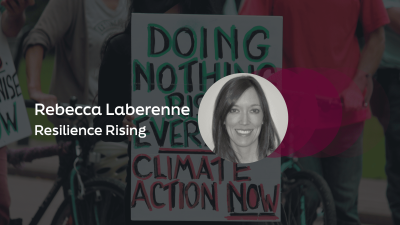
Improving access to redress for workers vulnerable to violence and harassment in South Asia
Experts discuss the factors that make some workers more vulnerable than others to violence and harassment.
This page is approximately a 4 minute read
This page was published on

Every day, around the world, people make decisions and take actions based on their perceptions of risk – risk to themselves, to their families, to their property, and to their communities. Some of these risks are daily stresses like the risk of not being able to put food on the table. Some are urgent threats like an incoming hurricane. Others are longer-term and more existential like those associated with climate change.
Oftentimes people make critical decisions by weighing trade-offs between risks. These trade-offs are influenced by real or perceived notions of the likelihood of the risk occurring and of the consequences if it does occur. Some risks feel more ‘real’ than others. More immediate and present financial concerns tend to outweigh less tangible risks even if the consequences of the latter are greater. This tendency is commonly cited as a reason for lack of action on preventative measures related to addressing natural hazard risks.
Risk is a product of exposure to a specific threat and vulnerability to that threat. Vulnerability can be thought of as the opposite of one’s ability to manage and mitigate impacts of the threat, by resisting, reacting, or adapting to it in specific ways – this is what we call resilience.
In the context of climate change, perceptions play into both threat exposure and resilience. Due to the high degree of uncertainty associated with climate change, there are no universally accepted definitions of future climate hazards, leaving room for perceptions to take hold. While resilience to climate change is in part a function of tangible factors like the physical characteristics of the built environment, it is also very much influenced by more subjective factors like levels of social cohesion and adaptive capacity.
To adapt to climate change, both individual and collective action is necessary. Understanding personal perceptions of resilience is important because these impressions feed into broader calculations of risk and risk tradeoffs that are made at an individual level and as a society. These impressions of resilience can work in both directions, either spurring action and empowerment to address the risk or creating a sense of helplessness and resignation.
Perceptions of resilience matter because climate change adaptation is fundamentally about understanding both individual and societal risk tolerance and willingness to pay for risk reduction.
Understanding perceptions of risk and discrepancies between real and perceived risk can also support targeted policies and communications efforts. In some cases, subjective survey data can also serve as proxies for objective data that is more difficult to collect.
The Lloyd’s Register Foundation World Risk Poll serves as a rich source of data for use in developing climate adaptation policies and plans. It includes data for places with limited data access and availability and supports a better understanding of the ways in which perceptions of risk and resilience are influenced by factors such as race, gender, age, socioeconomic status, and cultural norms. It also provides insights into indicators of resilience at individual, household, community, and society levels, illustrating how the composition of these components of resilience varies across regions and population groups. For example, perceptions of community cohesion contribute more significantly to resilience in some regions of the world whereas in other places, perceptions of access to infrastructure and government support are more influential. Understanding such variations is critical to developing appropriate and equitable policies and interventions.
For these reasons, Resilience Rising, a global consortium of NGOs and initiatives working together to build systemic resilience to some of the world’s most pressing challenges, is partnering with Lloyd’s Register Foundation to establish a cornerstone program on risk and resilience. Together, and with other strategic partners, Resilience Rising will support analysis of the World Risk Poll data and the development of key insights and applications relevant to resilience across six essential communities of practice, including businesses, policymakers, and infrastructure owners. We will also help to shape future iterations of the Poll to unlock insights on longitudinal perceptions of risk and resilience.
Resilience is a topic that can feel esoteric and disconnected from the real world, even though it is fundamental for both individuals and societies to understand and support as our world continues to become more interconnected, volatile, and uncertain. The rich data from the World Risk Poll and our partnership with Lloyd’s Register Foundation will enhance Resilience Rising’s understanding of risk and help define the most pressing areas where new solutions, practices, and insights must arise to build a more resilient future.